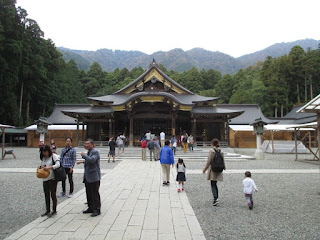As
follow-ups of my Tokaido Walk from Tokoy to Kyoto, I sometimes visit spots
around Tokaido. I called at “Kaido book & coffee” in Shinagawa.
The
shop opened late summer this year. It is both a café and a bookstore. The door
is open towards the old Tokaido street in the ground floor. There are about 10
thousand books in the second floor.
The
space is often used for the events related to Tokaido and travels.
Shinagawa
was the first shukuba station from Nihonbashi, the starting point of the about
500 kilometer Tokaido route to Kyoto, and had nearly 100 inns in the Edo period
(1603-1867). The road here has converted into a shopping street.
I saw a ukiyoe picture drawn used in the protection wall of a construction site. The original was drawn by Utagawa Hiroshige, a famous painter in the Edo era. The ukiyoe tells us the scene around here about 200 year ago.
The
local community is trying to make good use of the traditional Shinagawa shukuba
station to activate the area. The signboards of historic places as well as the
visiting center have been built. I saw many flags of the shukuba station at the
side of the street.
The
new book &coffee shop is another attempt to play up Tokaido.
I
enjoyed a cup of coffee.
























